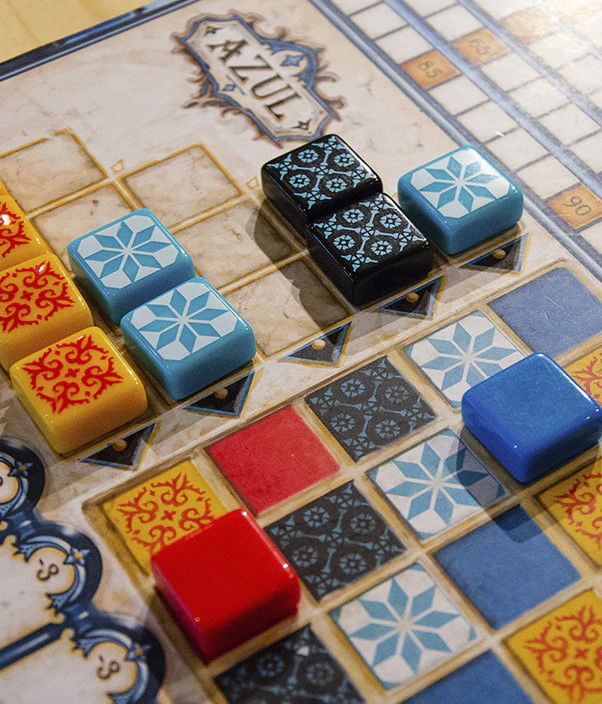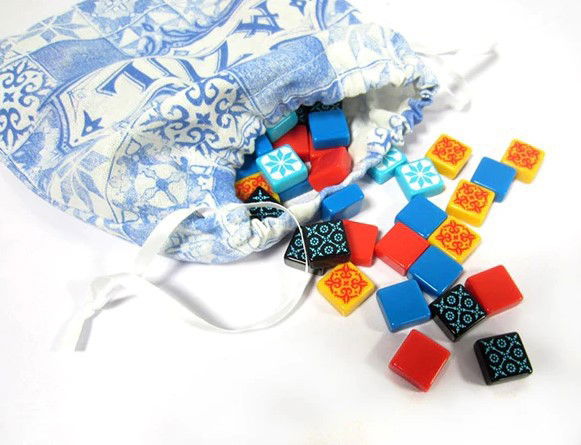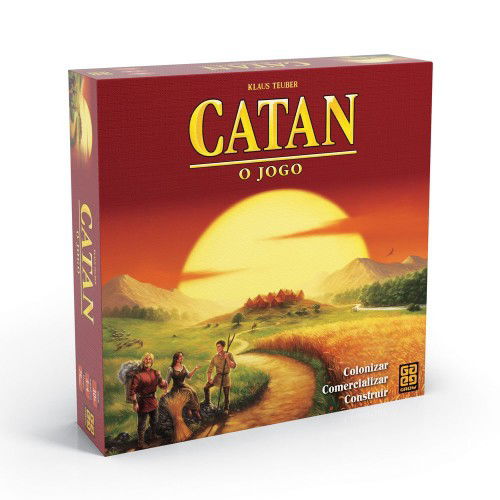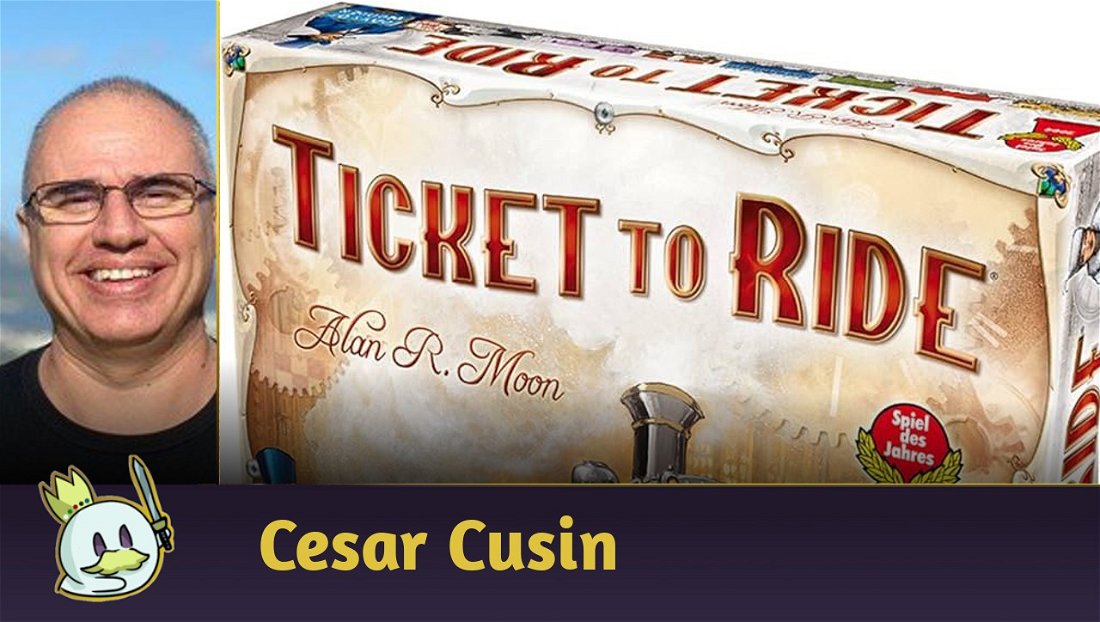Azul Context
If you're looking for strategy, stabbing your friend's backs, and having fun, come get to know this game!
Azul is a race for points, avoiding penalties, using strategy and a dash of luck (or opponent error). Go shopping in the market, visit the displays in their factories, get the pieces necessary, head to the reinforcement stage and try to build the best tilework as possible to adorn the Royal Palace of Évora and this way make Manuel I, King of Portugal, happy.

This is Azul's setting! A race for points is already different, but what is nice and makes the game interesting is how your points depend on you setting up a decorated tilework following a pre-established pattern.
Searching for the necessary items, discarding the rest, even temporarily, and risking your opponent getting the same raw materials as you, creates a lot of tension.
About the Game
It's a board game which has as basic mechanics collecting components, placing tiles, and a model-based construction. It's a party game which doesn't depend on languages, can be played with 2 to 4 players, recommended for children above 8 years old, with the final goal of scoring more points than your opponents, and what's very interesting is that it has an alternative game mode as well.
Azul is a Board Game by Michael Kiesling, released in Brazil by Galápagos. It even won several awards, such as Spiel des Jahres (Game of the Year), in 2018, the Ludopedia Family Game of the Year Award in 2018 and also winning the popular vote for that same award and year.

The artwork for this game is incredible, made by Philippe Guérin and Chris Quilliams. The game's box is stunning, and add to that colorful, well-done pieces made of resin with different colors to set up a tilework, which, by the way, is placed on a wonderful board, which is very resistant and thick, double-sided. The fact it is double-sided explains how there is more than one way to play, as said before: the alternative game mode.
How to Play
Basically, for the game's main mode, you have a pre-established tilework you should build. For that, you need to visit the raw materials factories at the marketplace and get what you need, and it is here that the game shines. At the marketplace, you can only get the tile pieces in a single color, and you need to practically discard the rest. There's a lot of strategy involved. These pieces that you, supposedly, didn't use, go to a common place, the central market, where their price can be too expensive.

After getting your pieces, you'll bring them to your workplace, your board, where you'll prepare yourself to reinforce it. Yeah, but that's when you'll see whether your strategy worked or not. On your board, there's a specific number of spots pieces of each color, and if you get less cards than necessary, you can't place them, and if you get too many, you'll be penalized.
It's okay, as you can always go back to the market to get more raw materials, but, if the factory you go to has fewer pieces or the exact quantity you need, okay, but if they have more pieces of the color you need, you'll have to bring them just them same, and the exceeding raw materials you get will be trashed, and you'll be penalized. An inadequate discard is never good, right?
Well, and what about when the market is empty or there are only raw materials which you don't want? Go to the central market! That's where things get interesting. At the central market, the first player to use the pieces from there has a bonus, which is being the first player to go to the marketplace in the next turn, which means, they'll get a freshly opened market with many options, but they also get a -1 penalty to their final score. You can't have everything.

At the central market is where the strategy becomes even more necessary, as the number of raw materials of the same color can be huge. So take notes, because if you keep an eye on your opponent's work, sometimes it is worth it to remove from the central market something that they want, and they'll end up consequently getting something they don't need or want, which means, you'll force a penalty on them. The rule of the land here is backstabbing.
Strategies: How to Get Higher Scores
Here are a few important tips: there are many ways to increase your scores while you place your tiles. Let's head to them: the first is forming complete horizontal lines. If you do that, the game will end, but it might be advantageous to do that if you're ahead, right? Per each completed horizontal line, you'll get a bonus of 2 additional points to your total score.

The second strategy is to try and place tiles vertically to complete a column. That gets you 7 extra points at the final count per vertical column, which means, complete columns.
The third and last strategy to get bonus points is to place 5 tiles of the same color; that will award you 10 extra points for each set of 5 uniform tiles, which means, you have 3 ways of boosting your score at the final count. That needs to be seen during the game, to decide which strategy you'll adopt. That will depend on the marketplace's offer and demand of raw materials. You have to keep an eye on everything!
Alternative Game Mode
In the alternative game mode, the marketplace search, the central market, the penalties and endgame bonus are exactly the same. What shines now in Azul is that there is no set board to place your tiles, so you can place them however you like on their lines, there's only 2 additional rules: you can't repeat tile colors in the same horizontal line, nor repeat colors in the same vertical column, which means Azul is even more challenging!
End Round and End Game
Keep in mind that, when a turn is over, for both game modes, usual and alternative, the factories refill the marketplace, and then you, brave player which went to the central market before anyone else, will be the first to go to the marketplace. The game is over when a player can get at least one horizontal line of tiles. Then the final count will be done, and whoever has the most points wins.
Azul Gameplay
Final Words
This is Azul, a simple, but very strategic, fun and exciting game. I strongly recommend Azul for your collection!














— Comments 0
, Reactions 1
Be the first to comment